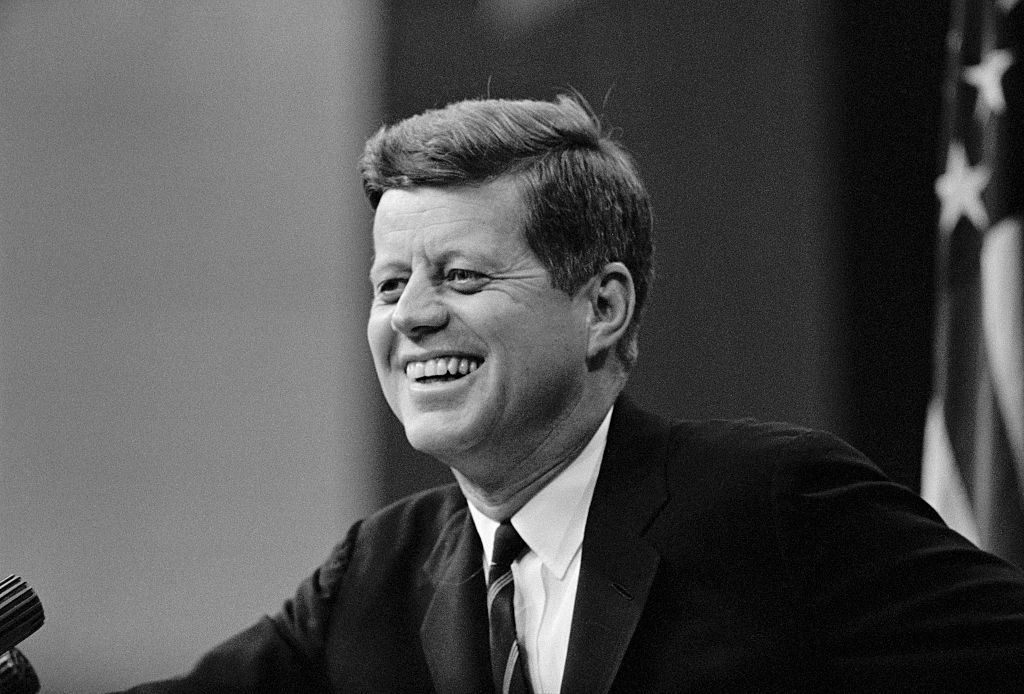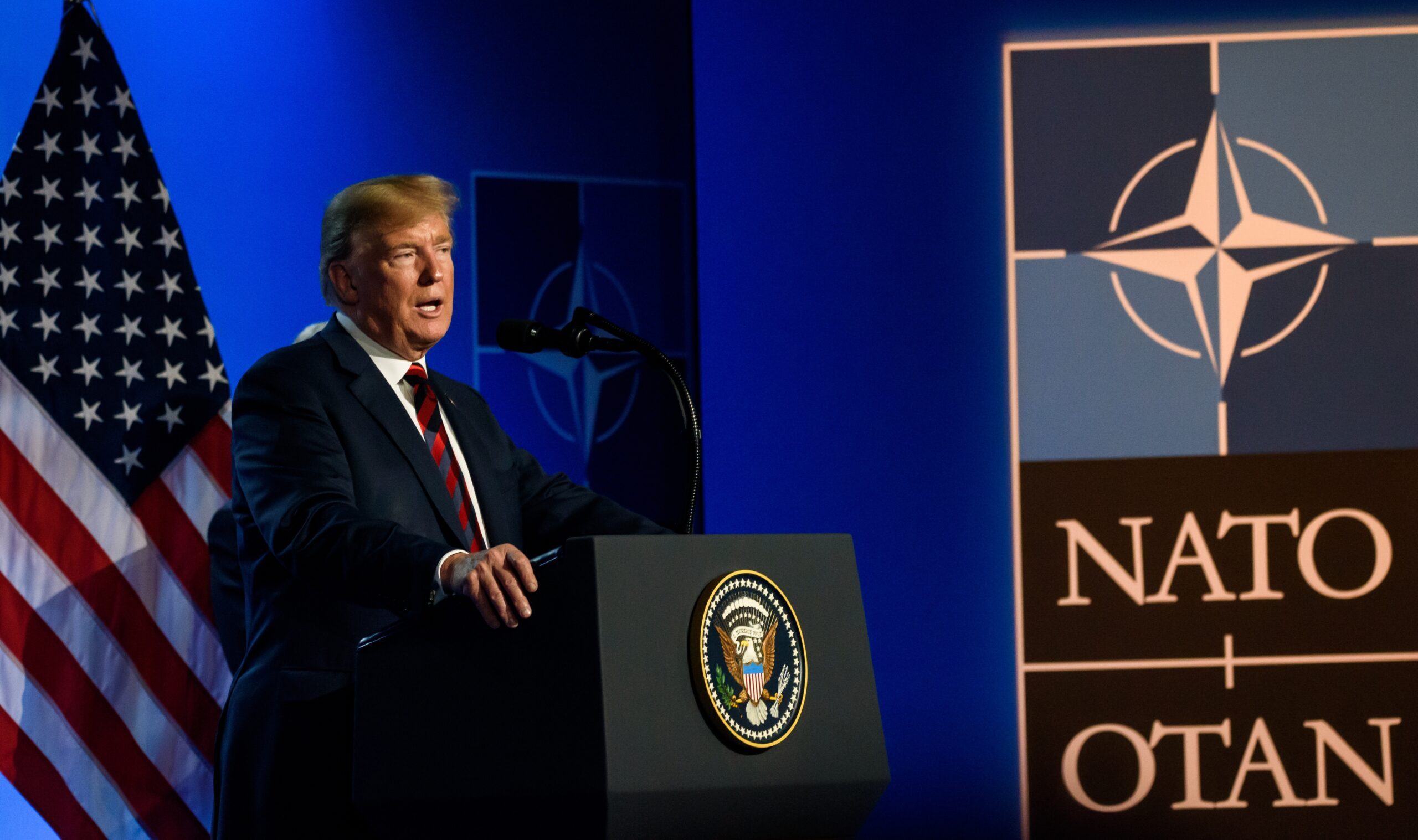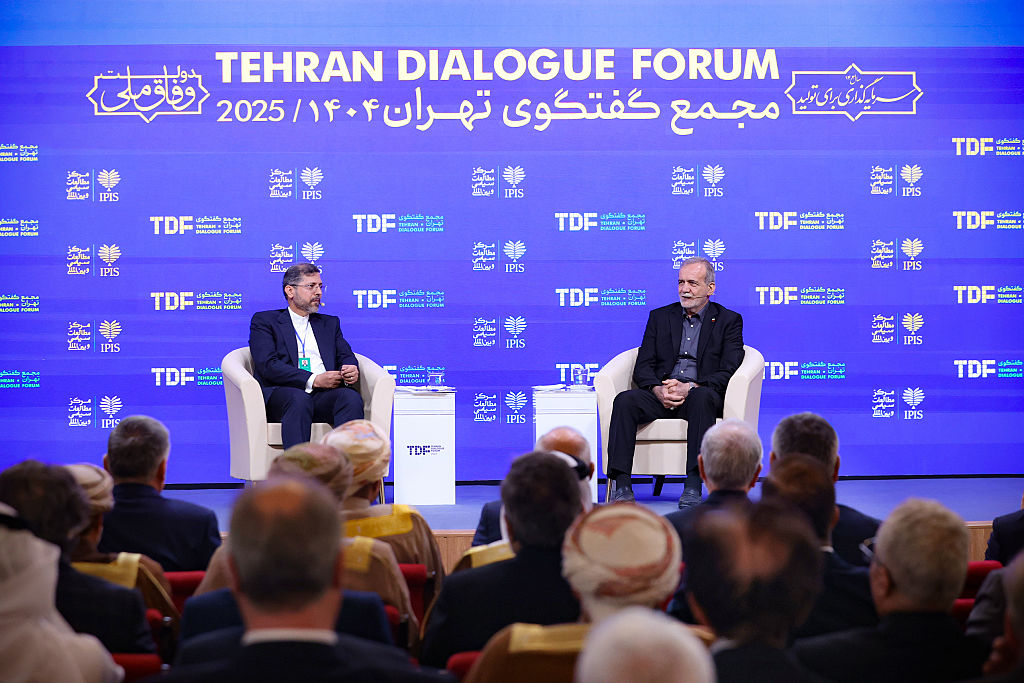
www.theamericanconservative.com
Dispatch from Tehran
Foreign Affairs
Dispatch from Tehran
Iran is defiant yet open to diplomacy—but is anyone in Washington ready to talk?
(Photo by Iranian Presidency/Handout/Anadolu via Getty Images)
The mood in Tehran’s halls of power is sober defiance. I arrived in the Iranian capital for the Tehran Dialogue Forum, organized by the Foreign Ministry’s think tank, the Institute for Political and International Studies (IPIS). This was my first trip since Israel’s surprise attack on Iran this June and the Twelve-Day War it kicked off.
The shadow of that conflict looms large, but it has not produced the panic or capitulation some in Washington and Jerusalem had hoped for. Instead, it has forged a grim national consensus: Iran is prepared for round two, convinced it has learned the right lessons. Yet it also remains convinced that a diplomatic solution could still be found to avert such a dreadful scenario.
In extensive conversations with top officials, including Foreign Minister Abbas Araghchi and Ayatollah Ali Khamenei’s adviser Kamal Kharazi, a clear picture emerged of Iran’s transformed domestic politics and international diplomacy after the war with Israel.
Perhaps the most major change pertains to national consolidation. The direct external threat, Tehran’s officials conveyed, unified the political landscape around Iranian nationalism, an ideology that transcends the Islamic Republic. To subtly emphasize the point, the organizers placed the flyers with the story of Arash the Archer, a heroic secular figure of Iranian mythology, at the guests’ dinner tables.
Another change is a validation of the importance and credibility of Iran’s missile capabilities. Officials project confidence that their defensive and deterrent posture was battle-tested and has proved credible. The point is not that Tehran seeks a wider war, but that it is ready for one.
This hardened confidence, however, masks a deep frustration and a sense of being trapped in a diplomatic dead end of Washington’s making. The door to talks with the United States, I was told repeatedly, is not closed. But there is a concern, if not a conviction, that there is no serious American partner on the other side to walk through it.A telling anecdote from the sidelines of the United Nations General Assembly in New York last September was relayed by the officials. Iranian diplomats, in a last-ditch effort to break the impasse over the nuclear program, presented what they saw as a major concession: a proposal to ship out all of its highly enriched uranium stockpiles. In return, they asked that the U.S. and E3 (France, Germany, and the UK) not invoke the “snapback” mechanism at the UN to reimpose international sanctions that were removed as part of the nuclear deal with Iran known as JCPOA, signed in 2015.The response was, from Tehran’s perspective, a deal-killer. The Western offer was for Iran to give up its most sensitive nuclear material, to be rescued from under the debris following the U.S. strikes on the key facility in Fordow, in exchange for only a months-long delay of the snapback threat, according to Iranian authorities. Iranians saw this not as a counterproposal, but as an insult—a clear signal that the goalposts were designed to keep moving. “Why would we make a tangible concession for a temporary reprieve?” one senior official asked. “It confirms they are not negotiating in good faith.”This has left the Islamic Republic in a dangerous limbo. The creative solutions discussed hitherto are dying on the vine. The idea of a regional consortium for uranium enrichment, once floated as a potential breakthrough in the talks between Araghchi and the U.S. special envoy Steve Witkoff, was described to me by a senior official as “dead.” It had been understood in Tehran as a recognition of Iran’s right to enrich uranium on its own soil, not as a substitute for that right. Under the scheme, Iran would enrich up to around four percent, which is only useful for civilian purposes, while stockpiles of highly-enriched uranium would be shipped abroad.Meanwhile, the pressure valve of public opinion is overheating. The Iranian people are grappling with a cascade of crises—water scarcity, climate change, and energy shortages—that are tangible and urgent. While these crises are blamed on corruption and mismanagement of the system, the nuclear standoff and related sanctions exacerbate them.
As for longer-standing forms of popular discontent, the authorities seem to have accepted a degree of de facto cultural liberalization: The uncovered heads of women have become normalized in Tehran to such an extent that they no longer are seen as a political statement against the system. However, the law on compulsory veiling is still officially on the books, with the authorities too afraid of both cracking down on the violations and repealing the law altogether. The latter action would align with the overwhelming social consensus but alienate the dwindling, but still powerful, ranks of hardline believers.
A similar kind of governmental indecisiveness is fueling public debate on the nuclear issue too. A growing segment of the public and political class sees the current path as a sucker’s bet: Iran faces severe punishment for maintaining a “threshold” civilian nuclear program on the cusp of weaponization while gaining little to no strategic advantage. The option of pursuing a nuclear deterrent—the bomb—is therefore gaining popularity. As one official noted starkly, “The Non-Proliferation Treaty is seen by many as not working in Iran’s interest.” Why remain in a treaty that only brings punishment without security?This is not a monolithic view. Some reformist academics argue precisely the opposite: If Iran has no intention of building a bomb, as its leaders insist, then why cling to 60 percent enrichment and invite crippling sanctions? Their argument is pragmatic—give up the high-grade uranium, secure sanctions lifting, and rescue the economy.But in the current climate, with no credible pathway offered by the West, the pragmatic argument is losing to the defiant one. The U.S. and its allies seem to believe that time and pressure are on their side. From Tehran, things look different. The passage of time is radicalizing the debate, and pressure is strengthening the hand of those who believe that the only language the West understands is the language of undeniable strength.Yet, in this climate of mistrust with Washington, one qualified success for Iran’s diplomacy is its regional détente. Saudi Arabia, a historic rival, was represented at the Tehran Dialogue Forum by a high-level official—a gesture that has become a new norm and that coincides with intriguing diplomatic maneuvers. Following Crown Prince Mohammed bin Salman’s visit to Washington, reports from well-informed Lebanese and Iranian media suggest he may have been asked by Donald Trump to act as a coordinator for dialogue between Washington and Tehran.While Tehran officially denies any negotiation-related content in recent exchanges, the speculation is not baseless. Saudi Arabia has a vested interest in de-escalation and, with its own nuclear ambitions, may perceive an interest in reviving the idea of a regional nuclear consortium. The arrangement would allow Iran to enrich uranium at low levels for a civilian energy program shared with Saudi Arabia, a win-win for the long-time rivals.
The message from my trip is clear: Tehran is hunkering down, not buckling. It is preparing for the next military confrontation, but it is looking for a diplomatic off-ramp. The path through Washington remains blocked, but a new, unexpected route through Riyadh may be tentatively opening. Until Washington demonstrates a serious intention to engage with Tehran, the region remains on a countdown to a second, potentially far more devastating, round of hostilities.
The post Dispatch from Tehran appeared first on The American Conservative.


















 Bitchute
Bitchute